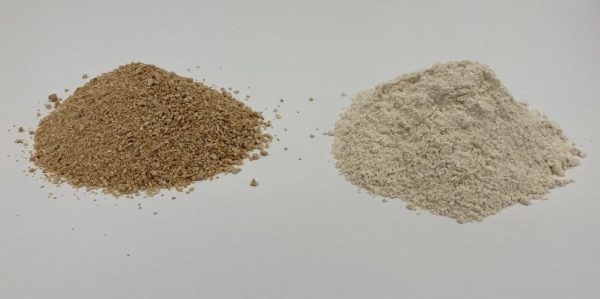
Ultrafine grinding technology plays a very important role in the intensive processing of agricultural products, because 80% of the world’s agricultural products need to be crushed and processed into food and industrial raw materials. The finer the particle size of the crushing, the better the advantages of agricultural products and the characteristics of micro-powder can be brought out. The application of ultrafine powder processing technology in agricultural products is to turn plant roots, stems, leaves, fruits and animal bones, meat, and eggs into fine powder to become high-end food and food raw materials. It can improve the quality and utilization of agricultural products, maintain the pure naturalness of agricultural products, strong taste, delicate texture, natural color, and maintain the biological activity and nutritional content of agricultural products. Better for digestion and absorption. More new products can be developed. This can increase the value of agricultural products and make rural areas rich. It is a leading enterprise project in agricultural industrialization.
Ultra-fine grinding technology is a high-tech technology developed in recent years. It has become the focus of scientific research in various countries around the world. So far, it has been involved in many fields such as chemical industry, metals, non-metallic materials, medicine, bioengineering, food, military industry, aerospace, electronics and machinery. In particular, its application in agricultural product processing has just begun, and the future is broad. . Micron powder technology can crush agricultural products to the macromolecular level, so it is of great significance and will bring a new situation in the intensive processing of agricultural products.
The purpose of ultra-fine grinding is generally to grind small pieces of materials with a particle size of 3 to 5 mm to less than 100 μm (commonly known as fine powder, micro-grinding), or to grind to less than 10 to 30 μm (commonly known as ultra-fine grinding or ultra-fine grinding). When the material is crushed to a certain fineness, these micro-powders produce many new properties, often called micro-powder properties, which have a huge specific surface area, huge porosity, and huge surface energy (converted and stored in mechanical energy or fluid energy) . This brings them new physical and chemical properties such as high solubility, multi-faceted activity, strong adsorption, explosiveness and fluidity. Their reactions to light, electricity, magnetism and heat have also undergone tremendous changes, and they can also It is said that when a substance turns into micron powder, it is different from the original substance and transforms into a “new substance” with new physical and chemical properties. As a result, a large number of new food materials can be obtained by intensive processing of agricultural products and foods using their new properties. Develop more new products. For example, compressed biscuits made of ordinary flour are difficult to swallow, but compressed biscuits made of micro-powder specific materials make the biscuits easy to swallow. Micronized food has strong adsorption properties. The huge porosity of micronized food creates collective pores, which can absorb and contain aroma for a long time. If a certain amount of carbon dioxide or nitrogen is absorbed, the freshness of the food will be greatly extended. Research shows that ultra-fine crushing processing can significantly improve the biological activity and absorption utilization rate of active ingredients in food and drugs, and improve the taste and palatability.
The application of ultrafine grinding technology in food processing has the following important significance:
1. Improve the quality and taste of food, make full use of the characteristics of micron powder, and facilitate the absorption of nutrients.
2. Raw materials that could not be fully absorbed or utilized are reused and new resources can be developed.
3. This machine can process materials that could not be processed into micro powder, formulate and further process them into various functional foods, develop new food materials, increase new food varieties, and improve resource utilization.
4. Increase the added value of agricultural products and increase farmers’ income. Let rural areas move towards industrialization.
